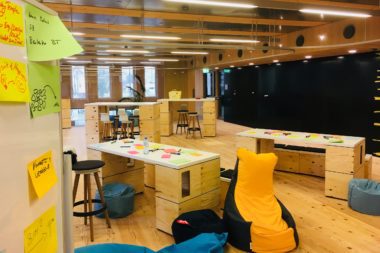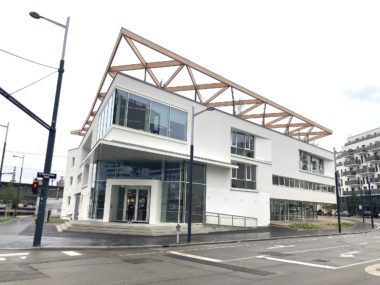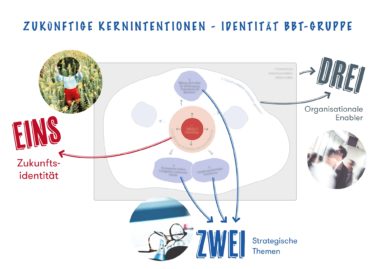Author: Carina Rohrbach
Picture: Dominik Lange
In the place of one of Vienna’s busiest shopping streets – the Landstraße, the order of the Elisabethines founded their convent about 300 years ago. Its purpose: a hospital for the district’s community. In addition to nursing, one of the main focuses of the convent sisters was what we would today call “community work”: they actively cared for the needy in the “Grätzel” (the local area), for example by feeding the poor and providing pastoral care.
Over time, the focus has shifted to nursing, and the hospital employed more and more secular staff. The pastoral aspect receded into the background. In recent years, the trend toward establishing large health centers raised questions about the economic viability of the relatively small hospital.
In order to preserve the premises, the Order of the Elisabethines, together with the City of Vienna, developed a new motto: “The human being in old age”. This was followed by the founding of the Franziskus Hospital and the merger with the Hartmann Hospital in Vienna’s 5th district.
The premises in Landstraße were now to house both the Franziskus Spital and offer additional services for people in old age: a pharmacy, transitional care, the house of the Order of Malta, therapy and rehabilitation services, serviced housing, and a hospice. This meant not only a change in terms of service orientation, but also required a fundamental architectural redesign of the entire location.
The challenges for the organization and its employees were complex:
- Questions of identity and a sense of belonging, driven by the merger with Hartmann Spital
- Questions of purpose, fuelled by societal changes, given political framework conditions and a reorientation of the services offered
- Questions of architectural implementation, which arose from the need for new procedures and processes
A holistic master plan creates future orientation
The complexity of the project required an approach that would first create clarity about the future potential of the site, provide a coherent understanding of future offerings and advance organizational transformation. It was important to the Elisabethines that all dimensions of the transformation – organization, people and architecture – were united in a meaningful way, and that necessary changes were made comprehensible to everyone involved. In order to achieve the above mentioned goals, the Elisabethines turned to theLivingCore.
Our expertise lies in identifying the future potential of an organization and integrating it in a meaningful way with the successful past. From this understanding, we work with our clients to develop robust corporate strategies, innovative service portfolios and we accompany them through necessary organizational changes. Furthermore, we ensure a coherent implementation in terms of architectural solutions and design, and we shape transformation and communication processes.
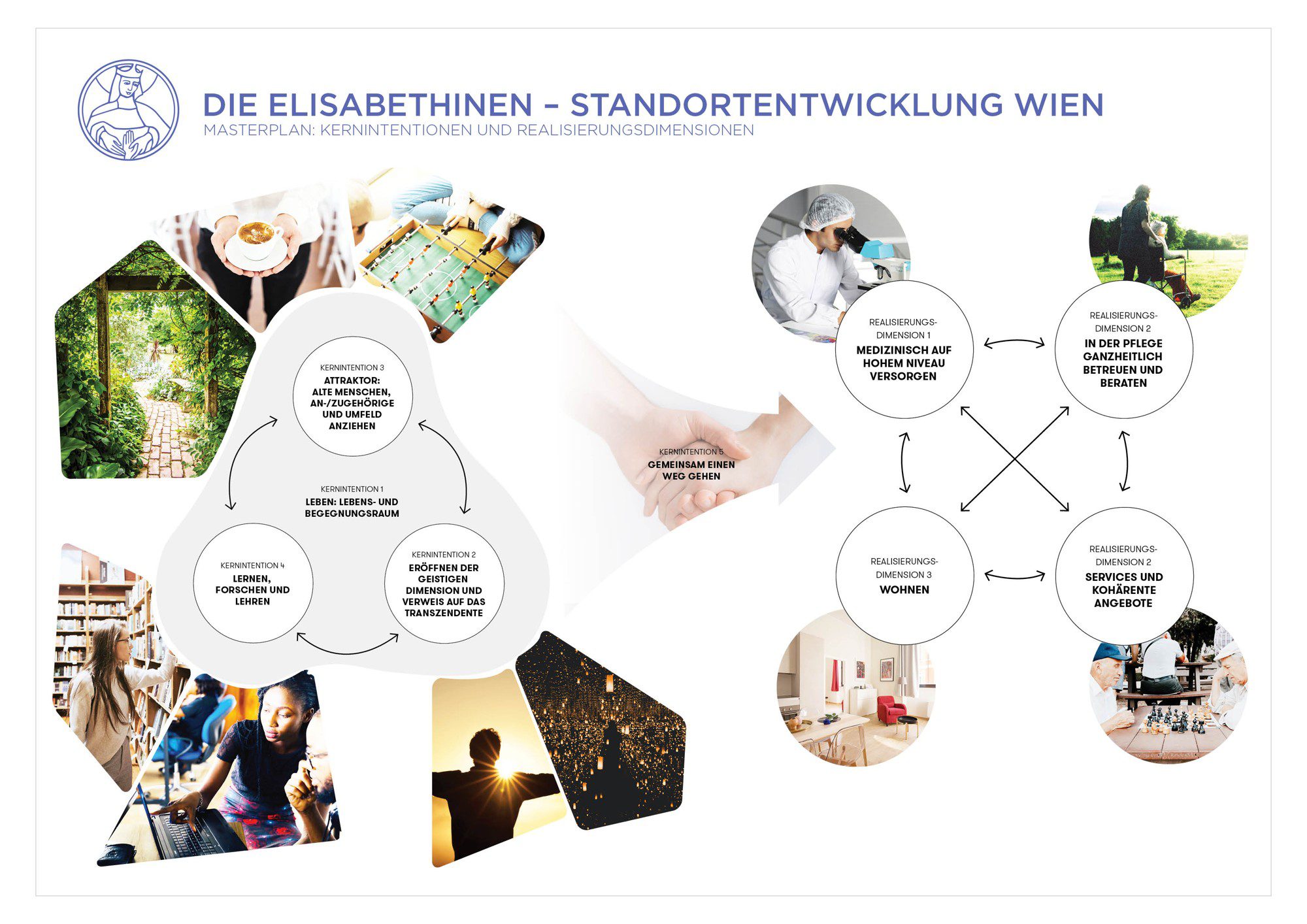
Starting with a deep understanding of the needs, fears and desires of future users, we developed a new identity for the location, which was integrated with the values of the Saint Elisabeth Order and formed into a holistic concept.
“The first step was not to develop concrete solutions, but to understand the social processes of the elderly – “What bothers me?, what fears and worries do I have?, what do I miss?”,” says Thomas Fundneider, CEO of theLivingCore and the project’s manager. “From this deep understanding, we were able to propose innovative hospital approaches for the digital age and forward-looking architectural solutions “from the future,” so to speak.”
The resulting masterplan pointed the way for all subsequent realization steps, involving a wide variety of stakeholders (Franziskus Spital, Hartmann Spital, or the Order of Malta).
Profound changes in offerings, architecture and ways of working
“theLivingCore’s way of working is highly structured. This creates orientation and helps you to plan ahead. At the same time, they use design methods that help you step out of your own thought patterns. For the design of the entrance hall, for example, we built a so-called “conceptual model” together. This model was not primarily guided by architectural considerations, but by social and cultural aspects that we wanted to make tangible in the entrance hall. This model was important for the architects, but it also helped us enormously in explaining necessary changes to the employees and working out solutions together with them.”
Elke Müller, project manager at the Elisabethinen
The entrance hall now no longer resembles a typical hospital entrance, but enables a relaxed arrival. It gives time to “take a breath” and “pause”, and it invites people to spend time there. For the design, we found it very important to take away the patients’ and visitors’ fears and uncertainty and to give them a feeling of being welcome.
A question that is often neglected in architectural projects, or only viewed one-sidedly, is “How do I help people orient themselves in a space?” Because of that, theLivingCore also developed the strategy for the wayfinding system at the entire site. The system was to reflect the Elisabethine’s values and tradition, but also their future orientation. Furthermore it was supposed to unite the various offerings at the location, be aesthetically pleasing and address the needs of patients and visitors.
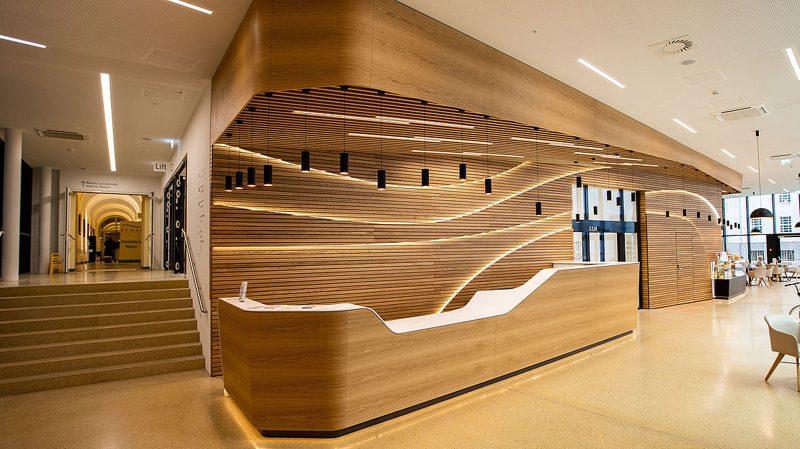
We developed the orientation logic, design guidelines, visual and symbolic language, as well as materialities in a co-creative process with the most important stakeholders. The result was an orientation system that tells a story and invites visitors to follow it. It was important for us to consider the orientation system from the perspective of the elderly – taking into account limited vision, walking with a cane, or sitting in a wheelchair, and considering the exceptional psychological situation that a stay in a hospital entails.
Change that lasts: a short side trip to the Marienkron fasting hotel
Our customers often tell us that not only our results work in the long term, but above all our “way of working” has a lasting effect on them. For example, Elke Müller, who after the successful completion of the Elisabethinen site went on to Kurhaus Marienkron in Burgenland. There, she was responsible for leading a future-oriented transformation process, as well as the architectural redesign of the entire site.
She said in our telephone conversation: “I took away a lot from working with you. The things we’ve developed at Landstraße, I have implemented in the Kurhaus Marienkron as well. We want to support our guests in developing a healthier lifestyle. That’s why, for example, we also have a buffet for fasters, which is very atypical for a fasting hotel. We entrust our guests with a lot of personal responsibility: so they can decide for themselves what and how much they eat.”
“A dietician accompanies them and advises on the selection at the buffet. Fasting means reduction, of course. Reduction does not mean, however, that one gives up the good taste. On the contrary, we see reduction as a pleasure that can be experienced with all the senses. That’s why you can often find our chefs at the buffet. They respond to guests’ questions and wishes and invite them to try out new flavors.”
Such a radical reorientation of services also requires a corresponding re-design of processes and an architectural re-design of the premises. Elke Müller has taken the approach and implementation guidelines for this from her work with theLivingCore.
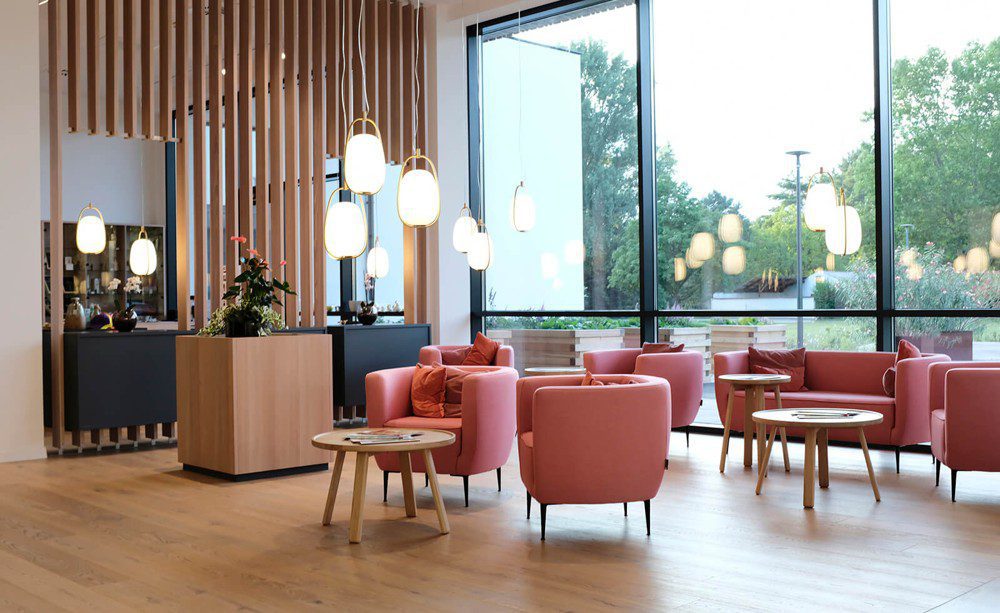
People in old age are more than the sum of their illnesses
About 300 years ago, courageous convent sisters created a place where the patient was not reduced to their illness, but where mental and spiritual well-being were the focus. Today, this idea is being reinterpreted at the Elisabethine’s site in the center of Vienna. It offers a broad range of services for people in old age, which is not exclusively geared to making people free of illness, but to contributing to a good life, freely following the motto of Elisabeth of Thuringia: “I have always said that you should make people happy!”
Future Identity: Transformation process that leads from the future
Successful companies have a clear purpose – a purpose that is meaningful and guides their actions. Often, this purpose gets diluted over time. Social, political, or economic changes make it difficult to keep the purpose clear. They make it difficult to implement it clearly in products and services. With Future Identity, we have created a process that enables organizations to identify their future potential from a deep understanding of their history, core and purpose, and thus successfully transform into a digital future.
Subscribe to Our Newsletter
Keep your innovative edge with more stories like this and additional reading tips, muses, and project updates.
